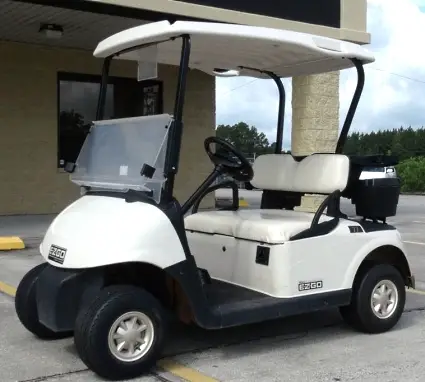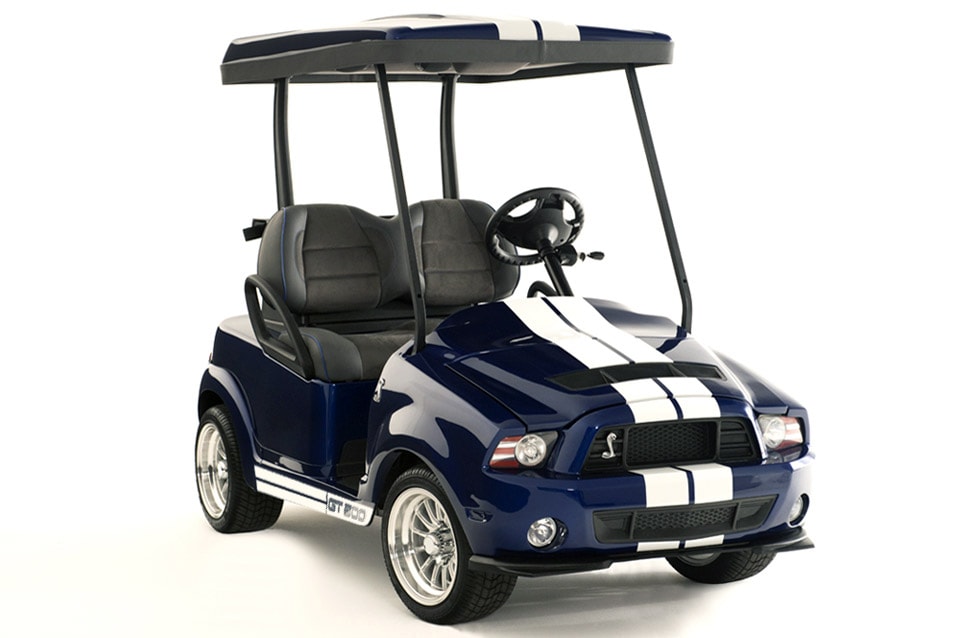How Many Horsepower Does a Golf Cart Have

Golf carts, with their compact size and efficient design, have become a common sight on golf courses, in resorts, and within various communities. These versatile vehicles serve as convenient means of transportation for both golfers and non-golfers alike. However, a question often arises when discussing golf carts: How many horsepower do they actually have?
Understanding the horsepower of a golf cart is essential for assessing its power, speed, and overall capabilities. Horsepower serves as a key performance indicator, providing insights into a cart’s ability to navigate different terrains, carry passengers and equipment, and meet the specific demands of its users.
In this article, we embark on a journey to explore the world of golf cart horsepower. We will delve into the standard horsepower ranges for golf carts, discuss the distinctions between electric and gas-powered models, and uncover the factors that influence a cart’s horsepower output. By gaining a comprehensive understanding of golf cart horsepower, you will be equipped with the knowledge needed to choose the right cart for your needs and maximize your experience.
So, fasten your seatbelts and join us as we unravel the mysteries of golf cart horsepower, discovering the power that propels these versatile vehicles and unlocks their full potential.

Exploring Golf Cart Power: How Much Horsepower Does It Have?
Before delving into the specifics of golf cart horsepower, let’s understand what horsepower represents in the context of vehicles. Horsepower is a unit of measurement that quantifies the power output of an engine. In the case of golf carts, horsepower provides an indication of the cart’s ability to accelerate, carry loads, and navigate various terrains.
Now, let’s turn our attention to the main topic at hand: How much horsepower does a golf cart typically have? In the following sections, we’ll explore the standard horsepower ranges, differences between electric and gas-powered carts, and the factors that contribute to their horsepower.
Standard Horsepower of Golf Carts
Golf carts generally fall within a specific horsepower range, depending on their design and intended use. It’s important to note that golf carts are not high-performance vehicles like sports cars or motorcycles, and their horsepower reflects their intended purpose. Let’s take a closer look at the standard horsepower ranges typically found in golf carts.
Low-End Horsepower Range
At the lower end of the spectrum, golf carts usually have horsepower ranging from 2 to 6 horsepower. These carts are commonly used for light transportation within small communities, resorts, or recreational areas. They are designed for short distances, moderate speeds, and limited carrying capacity.
While the lower horsepower range may not provide high levels of acceleration or power, it is sufficient for the intended purposes of these carts. They are ideal for leisurely rides, running errands, or short trips around the golf course.
High-End Horsepower Range
At the higher end of the spectrum, golf carts can have horsepower ranging from 10 to 30 or more horsepower. These carts are often used in larger golf courses, hilly terrains, or industrial applications where more power is required. They are capable of carrying heavier loads, navigating challenging landscapes, and achieving higher speeds.
Golf carts with higher horsepower are well-suited for transporting multiple passengers, hauling equipment, or tackling steep inclines. Their increased power output allows for improved acceleration, enhanced climbing ability, and better overall performance.
Electric Golf Carts: Powering with Electricity
Electric golf carts have gained popularity due to their quiet operation, zero-emission profile, and ease of maintenance. The power output of an electric golf cart is measured in horsepower, just like their gas-powered counterparts. Let’s explore the horsepower range for electric models and the factors that affect their performance.
Horsepower Range for Electric Models
Electric golf carts typically have horsepower ranging from 3 to 20 horsepower, depending on various factors such as the voltage of the cart’s battery system and the design of the electric motor. Lower voltage systems, such as 36-volt or 48-volt setups, generally have lower horsepower, while higher voltage systems, like 72-volt setups, can provide higher horsepower output.
The horsepower of an electric golf cart directly influences its acceleration, carrying capacity, and overall power. Higher horsepower models offer improved performance and are better suited for demanding tasks or navigating challenging terrains.
Factors Affecting Electric Golf Cart Horsepower
Several factors contribute to the horsepower output of electric golf carts. One significant factor is the battery capacity and voltage. Golf carts equipped with higher-capacity batteries and higher voltage systems generally have more power and can deliver higher horsepower output. These carts offer improved torque and acceleration, making them well-suited for demanding situations, such as climbing steep hills or carrying heavier loads.
The electric motor specifications also play a role in determining the horsepower of an electric golf cart. The design, efficiency, and power rating of the motor contribute to the overall performance of the cart. Golf carts with more advanced and efficient electric motors can deliver higher horsepower, translating to better speed and power capabilities.
It’s important to note that while electric golf carts may have lower horsepower compared to some gas-powered models, they make up for it with instant torque delivery, smooth operation, and environmental friendliness.
Gas-Powered Golf Carts: The Role of Combustion Engines
Gas-powered golf carts, also known as petrol or gasoline carts, utilize combustion engines to generate power. These carts provide a different driving experience and have their own horsepower characteristics. Let’s explore the horsepower range for gas-powered golf carts and the factors that influence their performance.
Typical Horsepower Range for Gas Models
Gas-powered golf carts typically have horsepower ranging from 8 to 25 horsepower, although some high-performance models can exceed these ranges. The horsepower output of a gas-powered cart is primarily determined by the engine’s displacement, configuration, and overall design.
Gas engines offer a higher power-to-weight ratio compared to electric motors, which allows for increased horsepower output. This additional power contributes to improved acceleration, higher top speeds, and enhanced carrying capacity.
Factors Influencing Gas-Powered Golf Cart Horsepower
The horsepower of a gas-powered golf cart is influenced by several factors. Engine displacement, measured in cubic centimeters (cc) or cubic inches (ci), plays a significant role. Carts with larger engine displacements generally produce more horsepower.
The configuration of the gas engine, such as the number of cylinders and the presence of turbocharging or supercharging, can also affect the horsepower output. Engines with more cylinders or forced induction tend to deliver higher horsepower.
Furthermore, the fuel type used in gas-powered golf carts can influence their performance. Different fuel blends or additives can impact power delivery, efficiency, and overall horsepower output. It’s essential to follow the manufacturer’s recommendations regarding fuel type and octane rating to ensure optimal performance.
Additional Considerations for Golf Cart Performance
While horsepower is an important factor in golf cart performance, it is not the sole determinant of speed and power. Several additional factors contribute to the overall performance and experience of a golf cart. Let’s explore these considerations.
Understanding the Relationship Between Horsepower and Speed
While higher horsepower generally translates to better acceleration and top speed, other factors such as gearing, weight distribution, and terrain conditions also influence the speed of a golf cart. A well-designed cart with optimal gear ratios and suitable tire selection can achieve higher speeds with the available horsepower.
It’s crucial to strike a balance between horsepower, speed, and safety when operating a golf cart. Excessive speeds can compromise stability and increase the risk of accidents. Adhering to speed limits and operating the cart responsibly ensures a safe and enjoyable experience.
Upgrades and Modifications to Enhance Golf Cart Performance
For those seeking to enhance the performance of their golf carts, various upgrades and modifications are available. These modifications can include installing high-performance motors, upgrading batteries or fuel systems, improving suspension components, or optimizing gear ratios.
However, it’s important to note that modifying a golf cart can impact its warranty, safety, and compliance with local regulations. Always consult with professionals and adhere to local laws and regulations when considering modifications.
Conclusion
The horsepower of a golf cart plays a significant role in its performance, carrying capacity, and overall capabilities. Whether it’s an electric golf cart or a gas-powered one, understanding the horsepower range and factors that influence it allows golf cart owners and enthusiasts to make informed decisions.
Electric golf carts typically have horsepower ranging from 3 to 20, with higher voltage systems and larger battery capacities providing more power. These carts excel in efficiency, quiet operation, and eco-friendliness. On the other hand, gas-powered golf carts offer horsepower ranging from 8 to 25, with factors like engine displacement and configuration influencing their performance. Gas carts provide a different driving experience and often offer higher top speeds and carrying capacity.
While horsepower is a key factor, other considerations impact golf cart performance. The relationship between horsepower and speed depends on factors like gearing and terrain conditions. Striking a balance between horsepower and safety is crucial to ensure a pleasurable and secure ride.
For those looking to enhance their golf cart’s performance, upgrades and modifications are available, such as high-performance motors and optimized gear ratios. However, it’s important to exercise caution, follow local regulations, and consider potential warranty and safety implications.
By understanding the horsepower of a golf cart and considering the various factors that affect its performance, golfers can choose the right cart for their needs and optimize their golfing experience.
So, whether you’re navigating the fairways of a golf course, cruising through a resort, or exploring a community, the horsepower of your golf cart can make a difference in your enjoyment and efficiency. Embrace the power, embrace the ride, and make the most of your golf cart experience.







